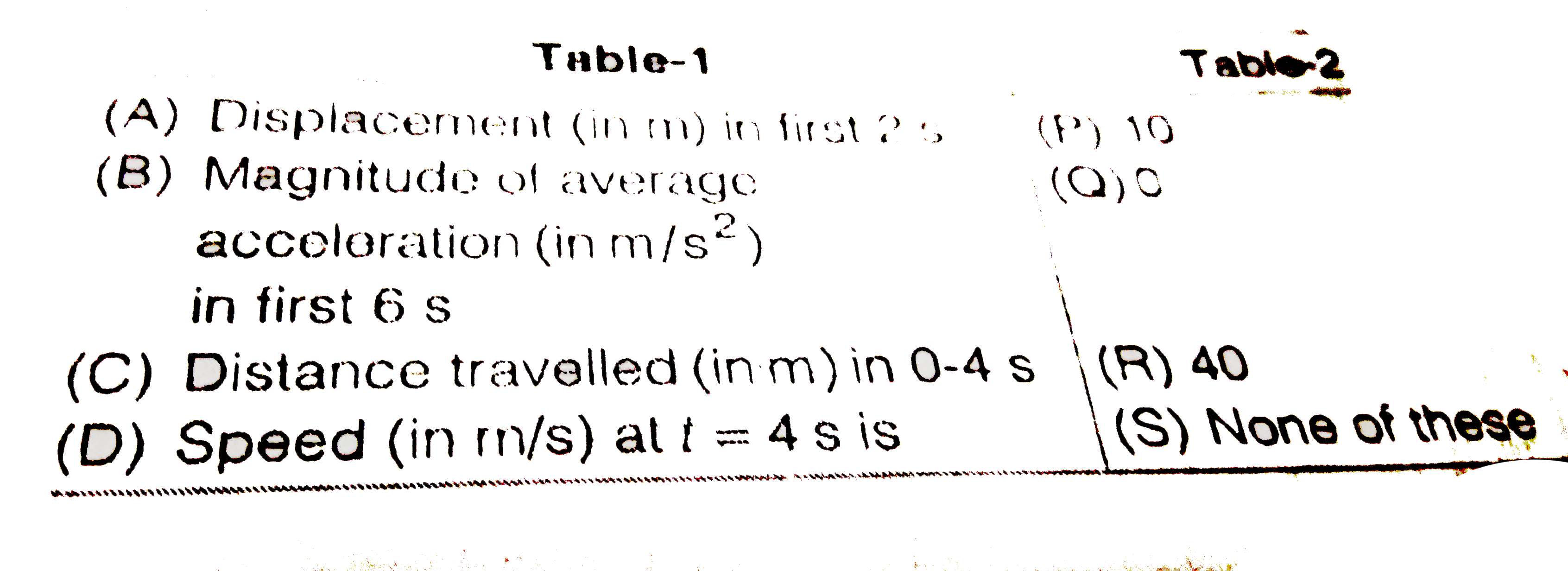A ball of mass 0.2 kg is thrown vertically upwards by applying a force by hand. If the hand moves 0.2 m while applying the force and the ball goes upto 2 m height further, find the magnitude of the force. (Consider g=10m/s2).
(a)4 N
(b)16 N
(c)20 N
(d)22 N
The correct Answer is:D
To solve the problem, we will use the work-energy theorem, which states that the work done on an object is equal to the change in its kinetic energy. Here are the steps to find the magnitude of the force applied to the ball:
Step 1: Identify the given data
- Mass of the ball, m=0.2kg
- Distance moved by hand while applying the force, s1=0.2m
- Additional height reached by the ball after leaving the hand, h=2m
- Acceleration due to gravity, g=10m/s2
Step 2: Calculate the total distance the ball travels after leaving the hand
The total distance the ball travels after the hand releases it is the distance moved by the hand plus the height it rises after being thrown:
s2=s1+h=0.2m+2m=2.2m
Step 3: Apply the work-energy theorem
According to the work-energy theorem:
Wtotal=ΔKE
Where Wtotal is the total work done on the ball, and ΔKE is the change in kinetic energy.
Since the ball starts from rest and comes to rest at the maximum height, the change in kinetic energy is:
ΔKE=KEfinal−KEinitial=0−0=0
Step 4: Calculate the work done by the hand and by gravity
The work done by the hand Whand and the work done against gravity Wgravity can be expressed as:
Whand=F⋅s1
Wgravity=−mg⋅s2
Step 5: Set up the equation
Since the total work done is zero, we have:
Whand+Wgravity=0
Substituting the expressions for work:
F⋅s1−mg⋅s2=0
Step 6: Solve for the force F
Rearranging the equation gives:
F⋅s1=mg⋅s2
Now substituting the known values:
F⋅0.2=0.2⋅10⋅2.2
Calculating the right side:
F⋅0.2=0.2⋅10⋅2.2=4.4
Now, divide both sides by 0.2:
F=4.40.2=22N
Final Answer
The magnitude of the force applied is F=22N.
---
- Mass of the ball, m=0.2kg
- Distance moved by hand while applying the force, s1=0.2m
- Additional height reached by the ball after leaving the hand, h=2m
- Acceleration due to gravity, g=10m/s2
The total distance the ball travels after the hand releases it is the distance moved by the hand plus the height it rises after being thrown:
s2=s1+h=0.2m+2m=2.2m
According to the work-energy theorem:
Wtotal=ΔKE
Where Wtotal is the total work done on the ball, and ΔKE is the change in kinetic energy.
ΔKE=KEfinal−KEinitial=0−0=0
The work done by the hand Whand and the work done against gravity Wgravity can be expressed as:
Whand=F⋅s1
Wgravity=−mg⋅s2
Since the total work done is zero, we have:
Whand+Wgravity=0
Substituting the expressions for work:
F⋅s1−mg⋅s2=0
Rearranging the equation gives:
F⋅s1=mg⋅s2
Now substituting the known values:
F⋅0.2=0.2⋅10⋅2.2
Calculating the right side:
F⋅0.2=0.2⋅10⋅2.2=4.4
Now, divide both sides by 0.2:
F=4.40.2=22N
The magnitude of the force applied is F=22N.
Similar Questions
A particle of mass 100g is thrown vertically upwards with a speed of 5m/s. The work done by the force of gravity during the time the particle goes up is
View SolutionA particle of mass 20 g is thrown vertically upwards with a speed of 10 m/s. Find the work done by the force of gravity during the time the particle goes up.
View Solution
Knowledge Check
A ball of mass M is thrown vertically upwards. Another ball of mass 2M is thrown at an angle θ with the vertical. Both of them stay in air for the same period of time. The heights attained by the two are in the ratio
A1:2B2:1C1:1D1:cosθ
A ball of mas 2gm is thrown vertically upwards with a speed of 30m/s from a tower of height 35m. (Given g=10m/s2)

View SolutionA cricket ball of mass 0.15 kg is thrown vertically up by a bowling machine so that it rises to a maximum height of 20 m after leaving the machine. If the part pushing the ball applies a constant force F on the ball and moves horizontally a distance of 0.2 m while launching the ball, the value of F (in N) is (g=10ms−2) __________.
View SolutionA ball is thrown vertically upwards. It goes to a height 19.6 m and then comes back to the ground, Find the initial velocity of the ball .
Take g = 9.8 ms−2
View SolutionA ball is thrown vertically upward with a velocity of 20 m/s. Calculate the maximum height attain by the ball.
View SolutionA force acts for 0.1 s on a body of mass 1.2 kg initially at rest. The force then ceases to act and the body moves thorugh 2 m in the next 1.0 s . Find the magnitude of force.
View SolutionA ball is thrown vertically upwards. It goes to a height 19.6 m and then comes back to the ground, Find the final velocity of the ball when it strikes the ground.
Take g = 9.8 ms−2
View SolutionA ball of mass 0.2 kg moves with a velocity of 20m/sec and it stops in 0.1 sec , then the force on the ball is
View Solution
